Japanese cuisine is wonderfully varied, but there’s so much more to it than sushi, which has grown into a ubiquitous representation of the nation’s cuisine. One of the many overlooked dishes of Japanese cuisine is nabemono, which is essentially a Japanese version of hot pot.
There are many different types of nabemono, and they come in two main categories: those with a light broth and those with a heavier, more noticeably flavored stock. Within these two categories, you have countless varieties to choose from, including mizutaki, oden, sukiyaki, and yudofu.
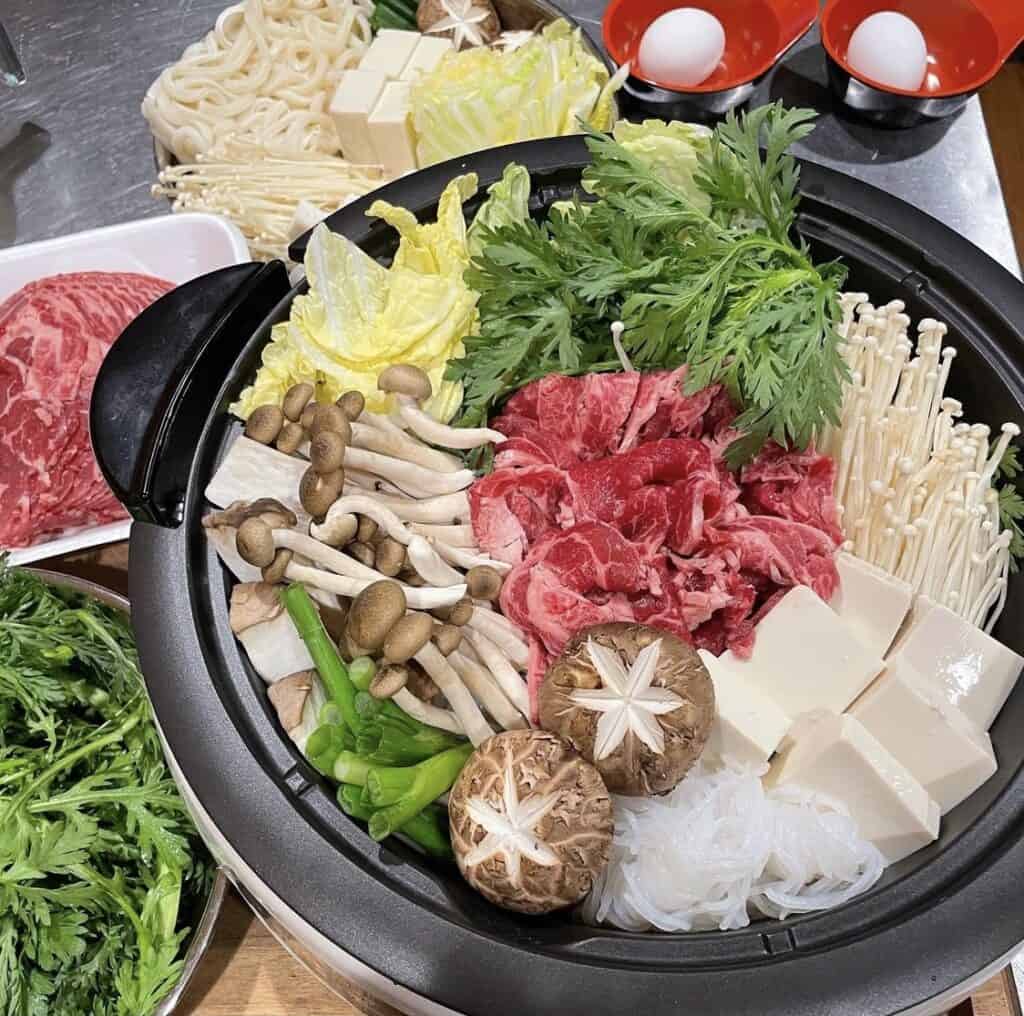

Of course, there are far too many types of nabemono (also known as nabe) to sum up in a single paragraph. Over the course of this guide, we’re going to take a closer look at the many types of nabemono that you can expect to come across. We’ll discuss the ingredients used in them and how the flavor differs from dish to dish.
The Many Types of Nabemono
Here’s a list of the kinds of nabemono we’re going to explore in this section:
- Yudofu
- Mizutaki
- Yosenabe
- Oden
- Sukiyaki
- Chankonabe
- Motsunabe
- Shabu-shabu
- Harihari-nabe
- Ishikari-nabe
- Fugu-chiri
- Anko-nabe
- Soy milk nabe
- Kimchi-nabe
- Kaninabe
- Hakusai-butaniku
- Hoto-nabe
- Dote-nabe
Yudofu
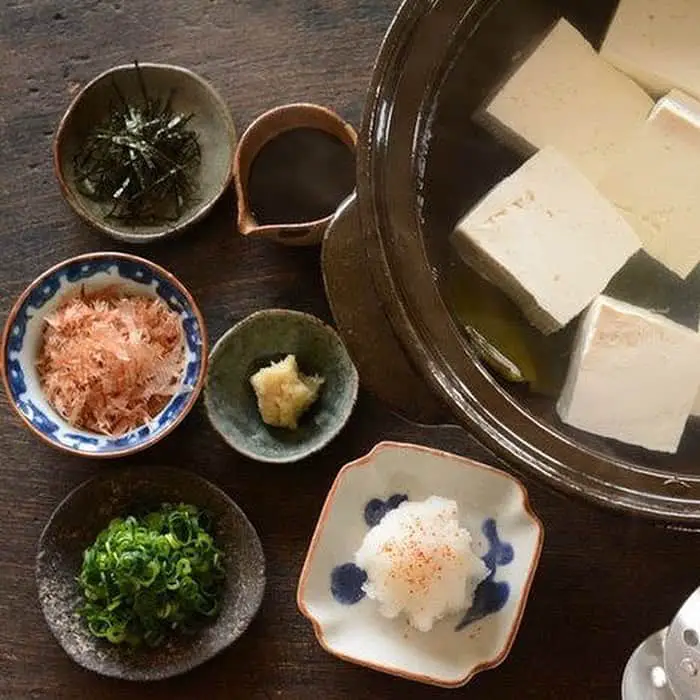
The word yudofu translates literally to boiled water and tofu, and that’s a good indicator that this kind of nabe is made with tofu as a primary ingredient. This is one of the healthier types of nabe since tofu has a high protein content yet has low calories, ensuring that you won’t gain excess weight eating this kind of nabemono.
In Japan, this dish is traditionally eaten during the wintertime because of its warmth, though you can cook it at any time of year if you’re craving a nabe made with tofu. Yudofu typically has a broth with a lighter flavor to it.
Mizutaki
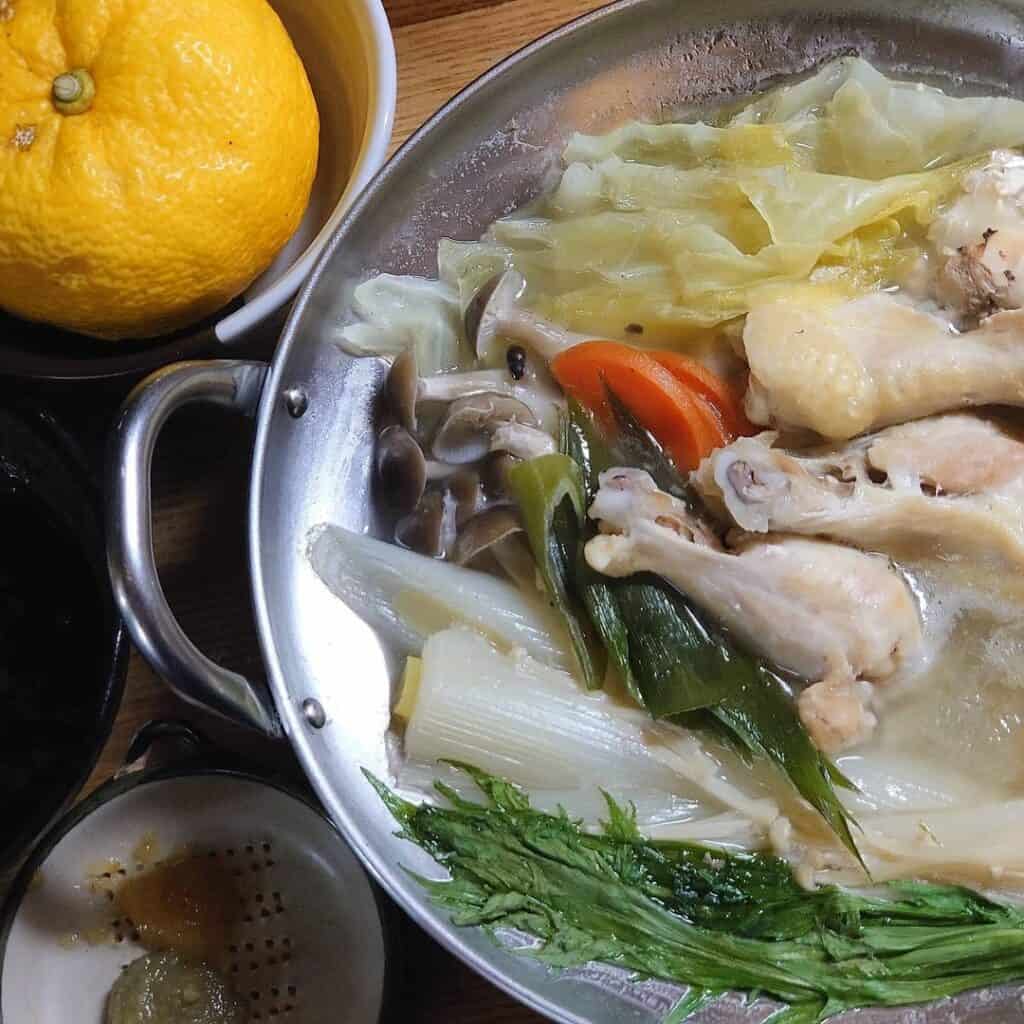
Mizutaki is a kind of nabe that is traditionally cooked in Kyushu, which is the southernmost of the four major islands that make up Japan. Mizutaki is also known as chicken nabe because the main ingredient consists of pieces of bone-in chicken wings.
The bone is left in the chicken wings to help contribute to the flavor of the broth, though you’ll also have to be careful not to run into a stray piece of bone while you’re eating your mizutaki. Much like yudofu, this is a kind of lightly-flavored nabe that is more reliant on the taste of the ingredients than the broth.
Yosenabe
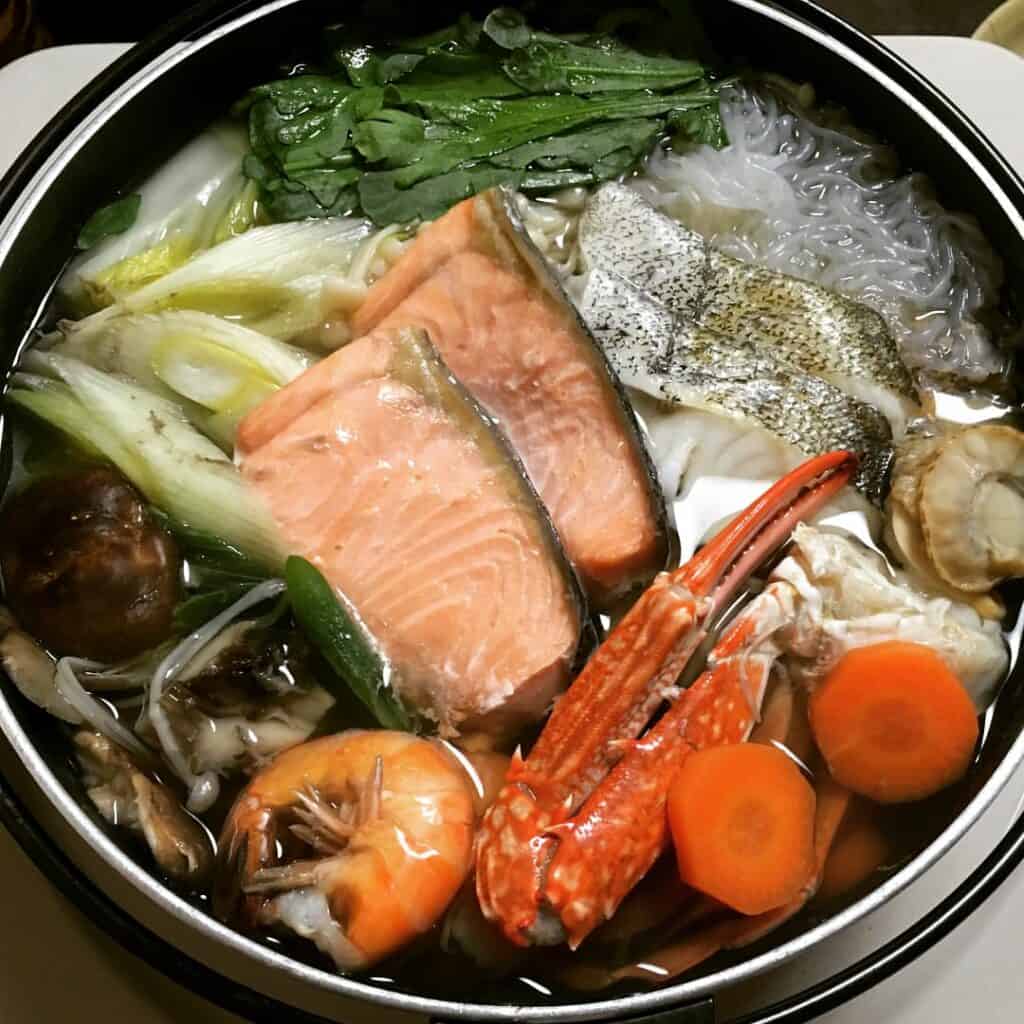
Yosenabe is one of the most widespread types of nabemono, and it’s one of the first that most people try. The prefix yose means to put together, representing the many ingredients that are typically used when cooking yosenabe.
Unlike other kinds of nabe, yosenabe can be prepared with a wide range of ingredients, and most Japanese households have their own way of creating this kind of nabemono.
One of the only rules that apply to yosenabe is that the broth has a heavier flavor, being made with either miso or soy sauce. Some of the common ingredients that are included in yosenabe include mushrooms, shrimp, beef, eggs, and more.
Oden
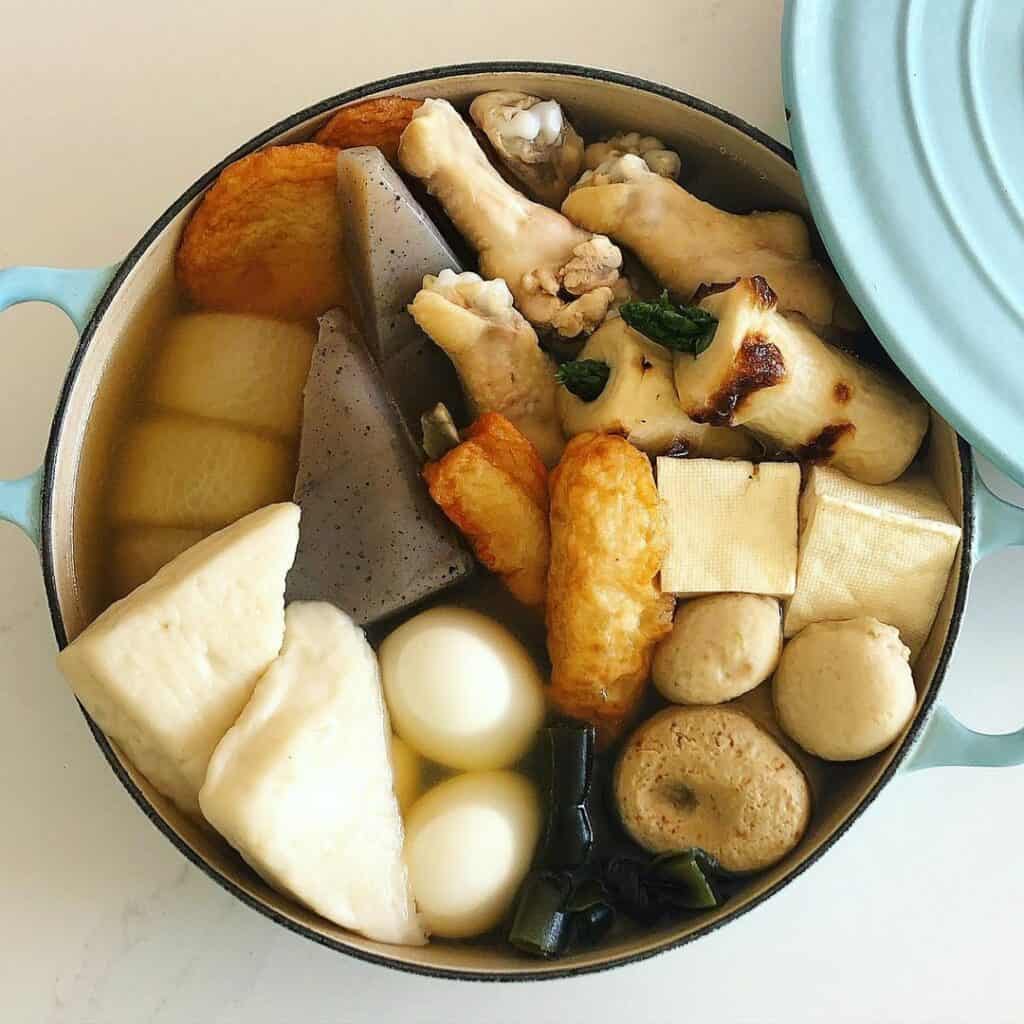
Oden is another one of the more popular forms of nabemono, and it’s served in convenience stores all around Japan, especially during the winter. The broth used in oden tends to have a heavier flavor, as it’s made out of dried tuna flakes known as katsuobushi mixed with kelp.
The distinctive flavor of the broth is due to the soy sauce that is added to it later as a form of seasoning. Some of the main ingredients outside of the broth include eggs, konjac, and daikon. Oden is typically served with Japanese mustard (known as karashi) on the side.
Sukiyaki
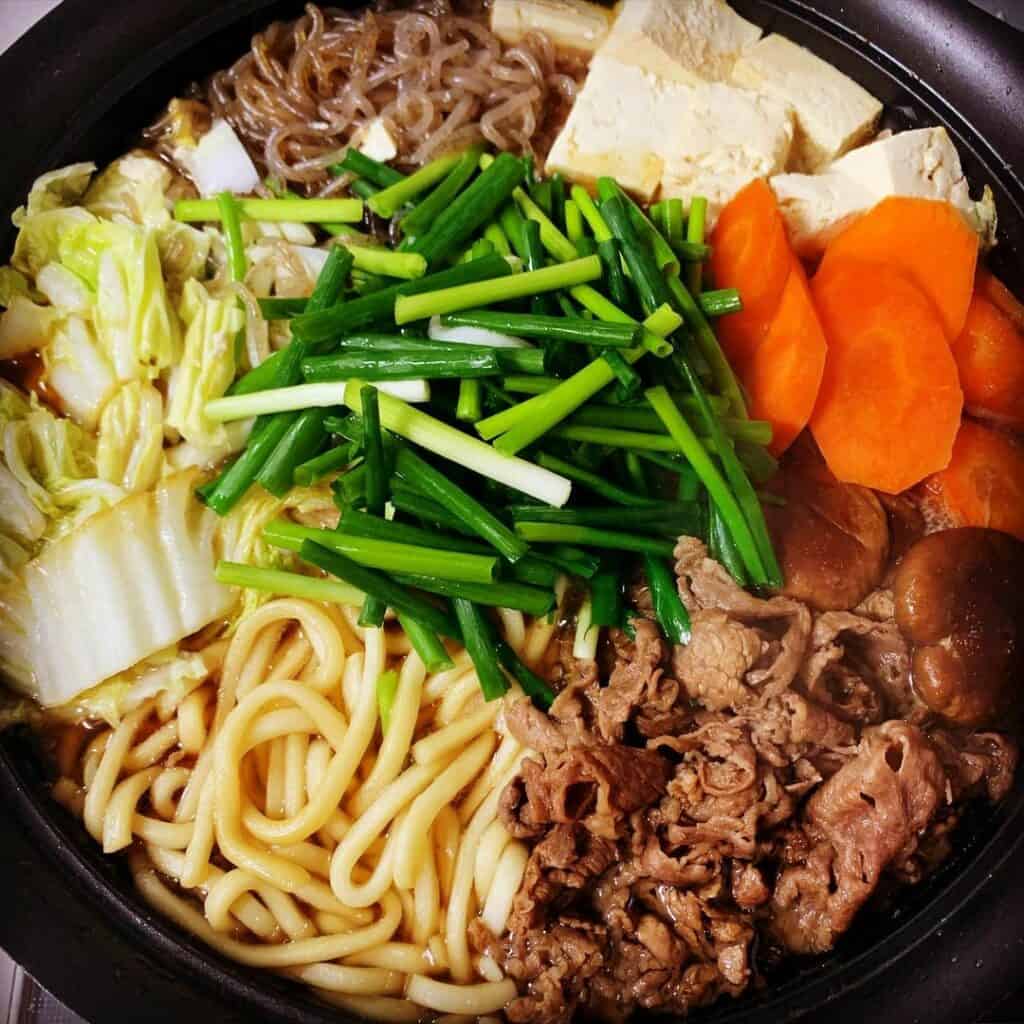
Yet another one of the heavily-flavored types of nabemono is sukiyaki. This kind of nabe tends to have a sweeter flavor to it because it’s made out of shouyu, which is a type of sweetened soy sauce. The other ingredients used in this kind of nabe include tofu and starchy noodles accompanied by thin-sliced beef.
Sukiyaki is often served alongside a dip made out of raw eggs. The raw eggs help add a full-bodied umami flavor to the ingredients that are dipped in it, contrasting with the sweetness that the broth imparts on the ingredients. Starch noodles are recommended, as they’re better at absorbing the flavor of the broth.
Chankonabe
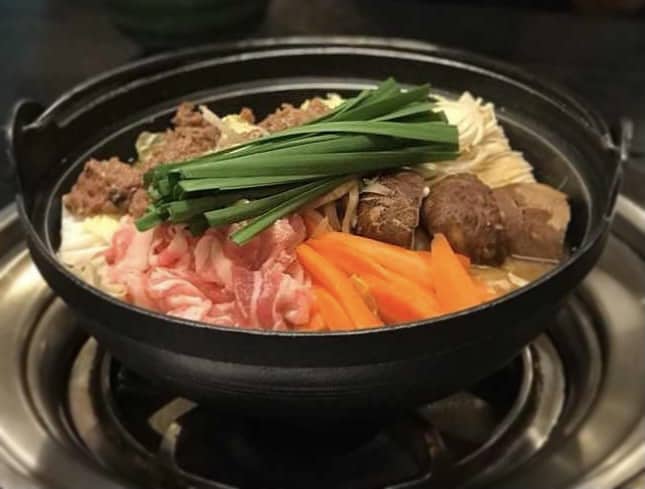
Chankonabe is a form of nabemono that is similar to yosenabe when it comes to the ingredients. Like with yosenabe, the kind of ingredients that you can use to prepare chankonabe are varied, and they depend on the person cooking it and any family recipes they may have learned from.
The key difference between chankonabe and yosenabe is that chankonabe tends to contain many more ingredients within the broth. This is because chankonabe was created by sumo wrestlers as an effective way to gain weight. In fact, many retired sumo wrestlers take to opening up chankonabe restaurants later in life.
Motsunabe
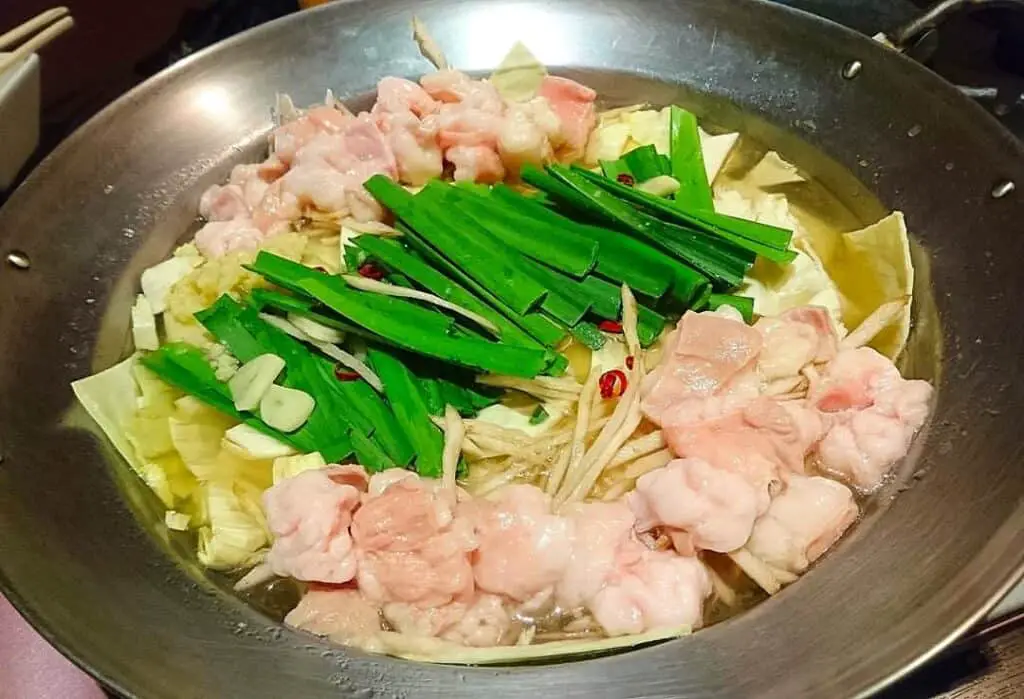
Motsunabe was originally a regional dish that you could only find in Fukuoka, but it has gradually gained popularity because of its low cost and great taste. As with many other kinds of nabe, the exact recipe used for motsunabe depends on the person preparing it, but the main ingredient is pork offal.
Cabbage and garlic chives are other ingredients that you’ll frequently find in motsunabe, but their inclusion isn’t a hard and fast rule like the inclusion of the pork offal. Motsunabe can also be made with beef offal. This is a strongly-flavored nabe made with either miso or soy broth.
Shabu-shabu
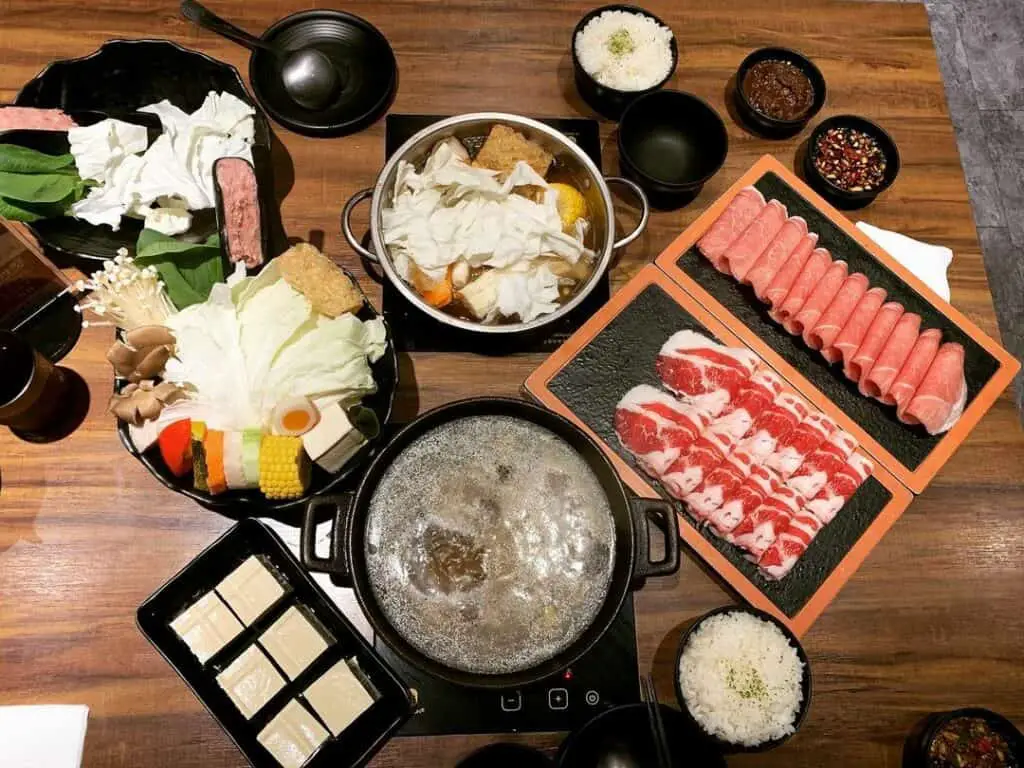
You may have noticed that this kind of nabe deviates from the typical nabemono naming conventions, and that’s because its name is actually an onomatopeia that represents the sound of boiling water. Shabu-shabu differs from other types of nabe in that you dip the ingredients in and cook them yourself.
The way that shabu-shabu is served is more similar to hot pot from other east Asian cuisines, and many ingredients can be dipped and cooked in the broth. A typical serving of shabu-shabu will be accompanied by plenty of vegetables and raw meats, and you can pick and choose what you eat a little bit at a time.
Harihari-nabe
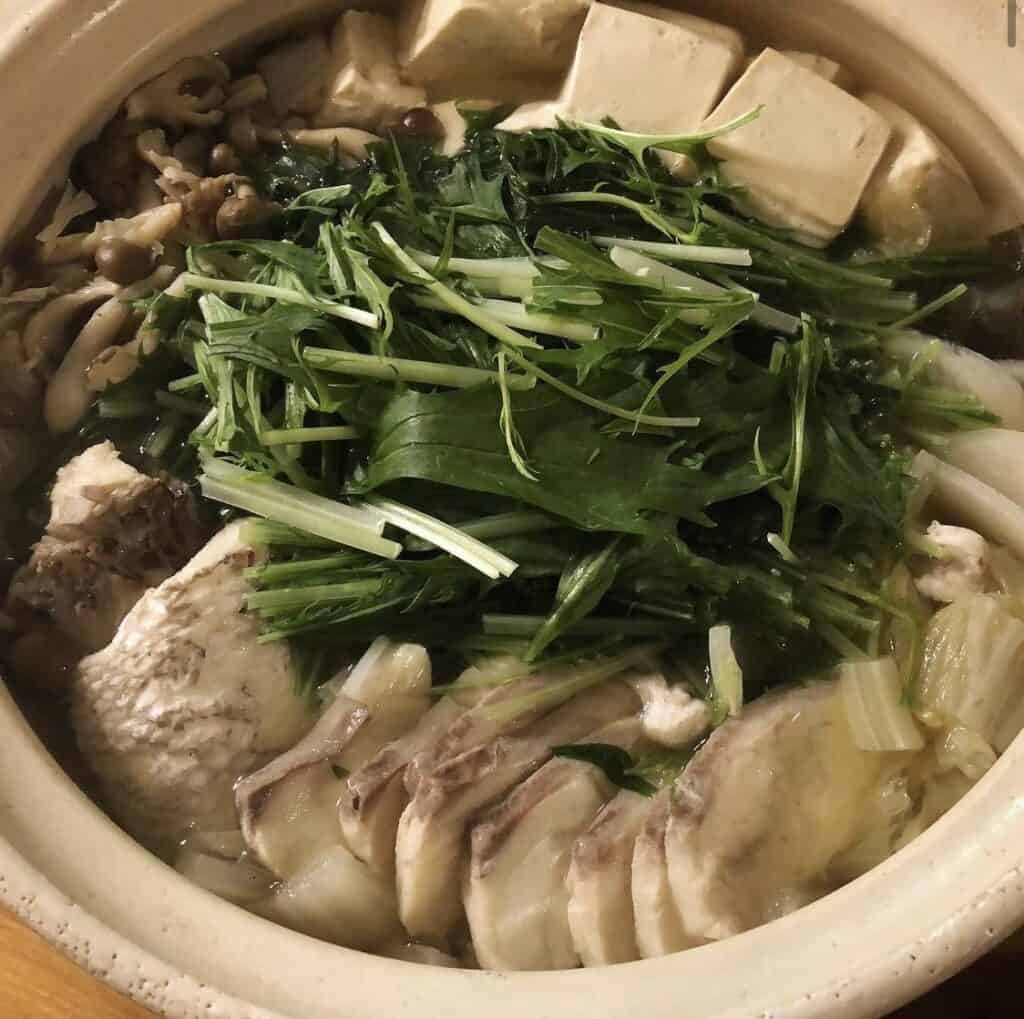
Harihari-nabe is a type of nabe that is cooked with whale meat, specifically from the minke whale (also known as the lesser rorqual). Similarly to shabu-shabu, the name of harihari-nabe is derived from an onomatopeia, as harihari resembles the sound of someone chewing on this kind of nabemono.
Harihari-nabe has gradually declined in popularity along with the trend of whaling in Japan, as it has made whale meat much harder to find. To keep the tradition of cooking harihari-nabe alive, many cooks have taken to substituting the whale meat in this type of nabe with pork, duck, or even horse meat.
Ishikari-nabe
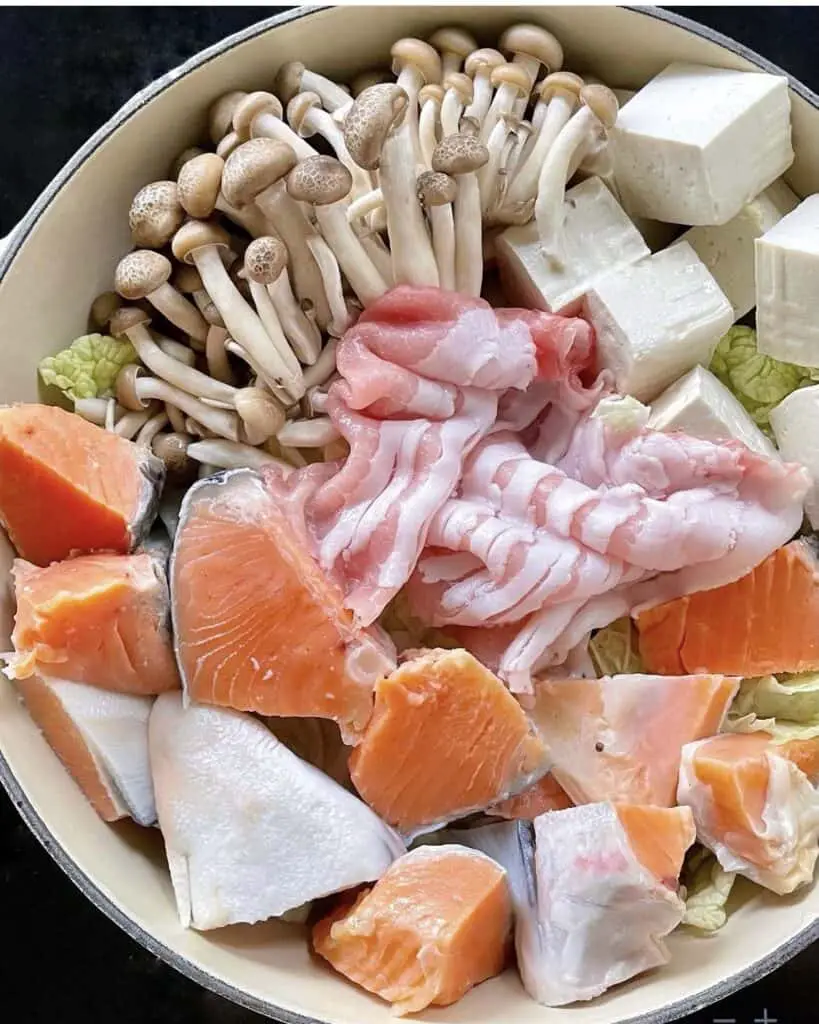
Ishikari-nabe is a type of nabemono that is native to the island of Hokkaido because of that region’s prevalence in Japan’s fishing industry. This kind of nabe is of the more strongly flavored variety, made with a broth that uses miso as its main ingredient. However, the most notable ingredient in ishikari-nabe is raw salmon.
Along with your typical salmon meat, ishikari-nabe contains the ara, which is made up of fish offal that’s left over after the meat has been filleted. Ishikari-nabe typically features a few additional ingredients, like japanese pepper powder, as well as tofu and vegetables.
Fugu-nabe
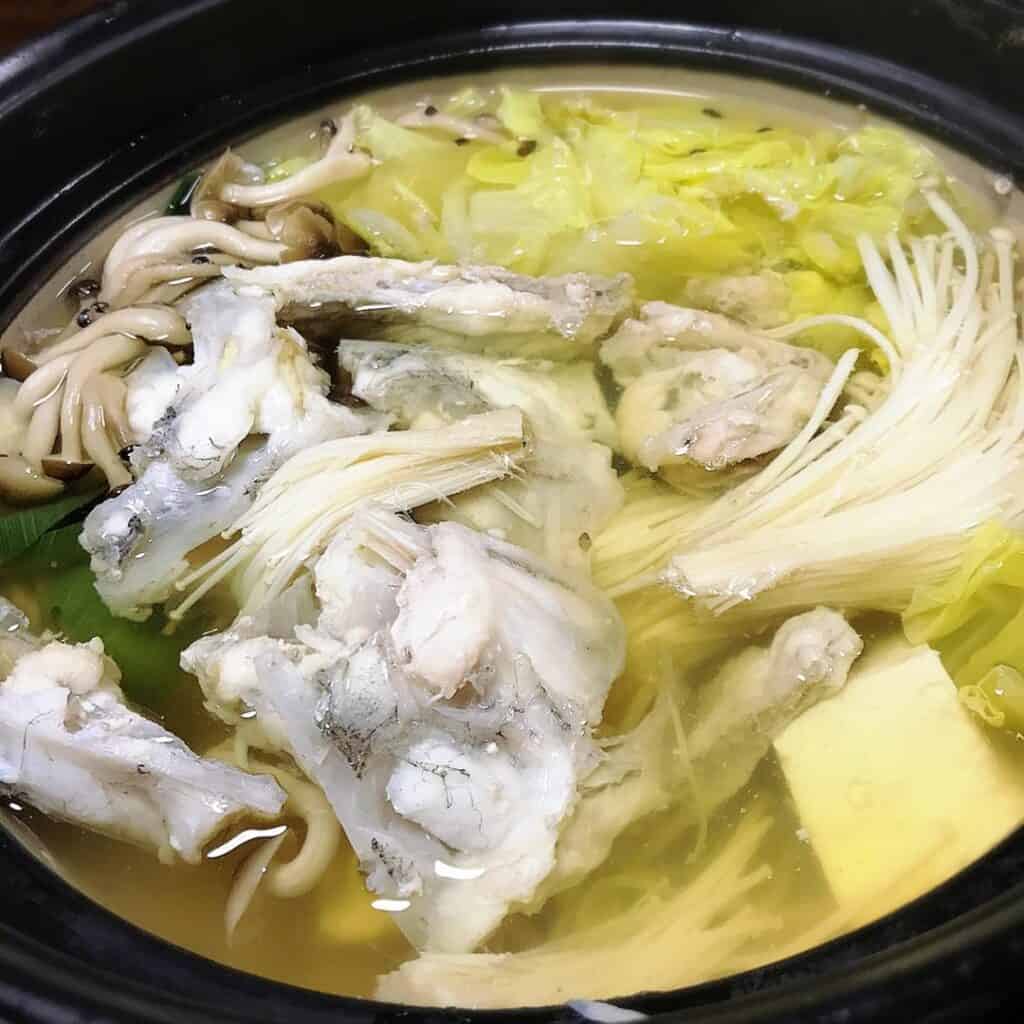
You’ve likely heard of the infamous fugu fish, which can kill you if isn’t prepared properly because of its exceedingly toxic nature. If you’ve heard of fugu fish, you may have expected it to be served on its own, but fugu-nabe is actually one of the most popular ways to consume this kind of fish.
Since preparing fugu is so dangerous, you’re unlikely to find this dish outside of high-grade restaurants with certified chefs. This is a nabe that is prepared with a lighter broth, as it isn’t meant to overpower the delicate flavor of the fugu fish, and each serving should be seasoned with ponzu to your liking.
Anko-nabe
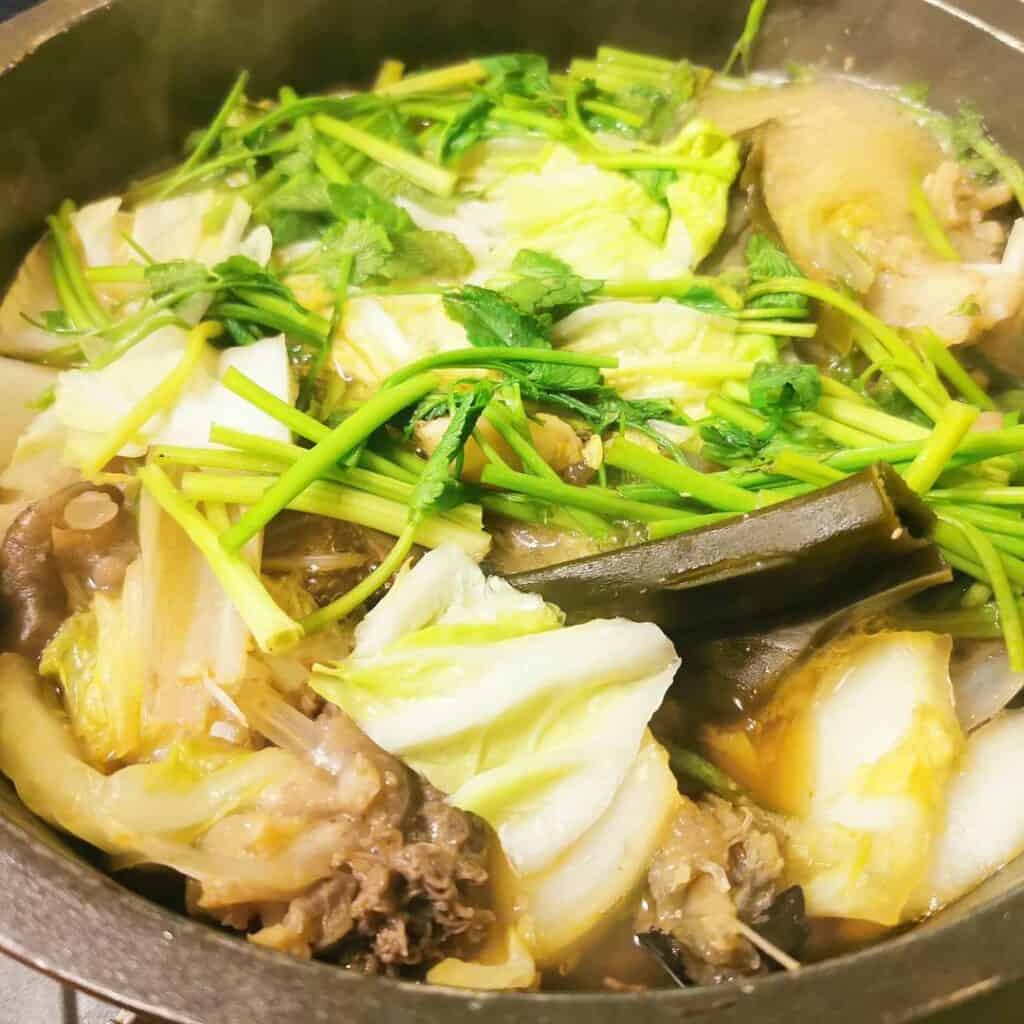
Anko-nabe is a similar recipe to fugu-nabe, though it substitutes the fugu with anko, which is known as monkfish in English. Much like fugu, the monkfish has a delicate flavor that can be overpowered by a strong broth, so anko-nabe is prepared with a lighter broth and flavored with sauces later on.
Uniquely, this kind of soup is prepared with monkfish liver, which is known as an-kimo in Japan. During the preparation process, the liver of the fish melts into the soup and contributes to the thick consistency and rich flavor of the broth, despite its relatively light base.
Soy Milk Nabe
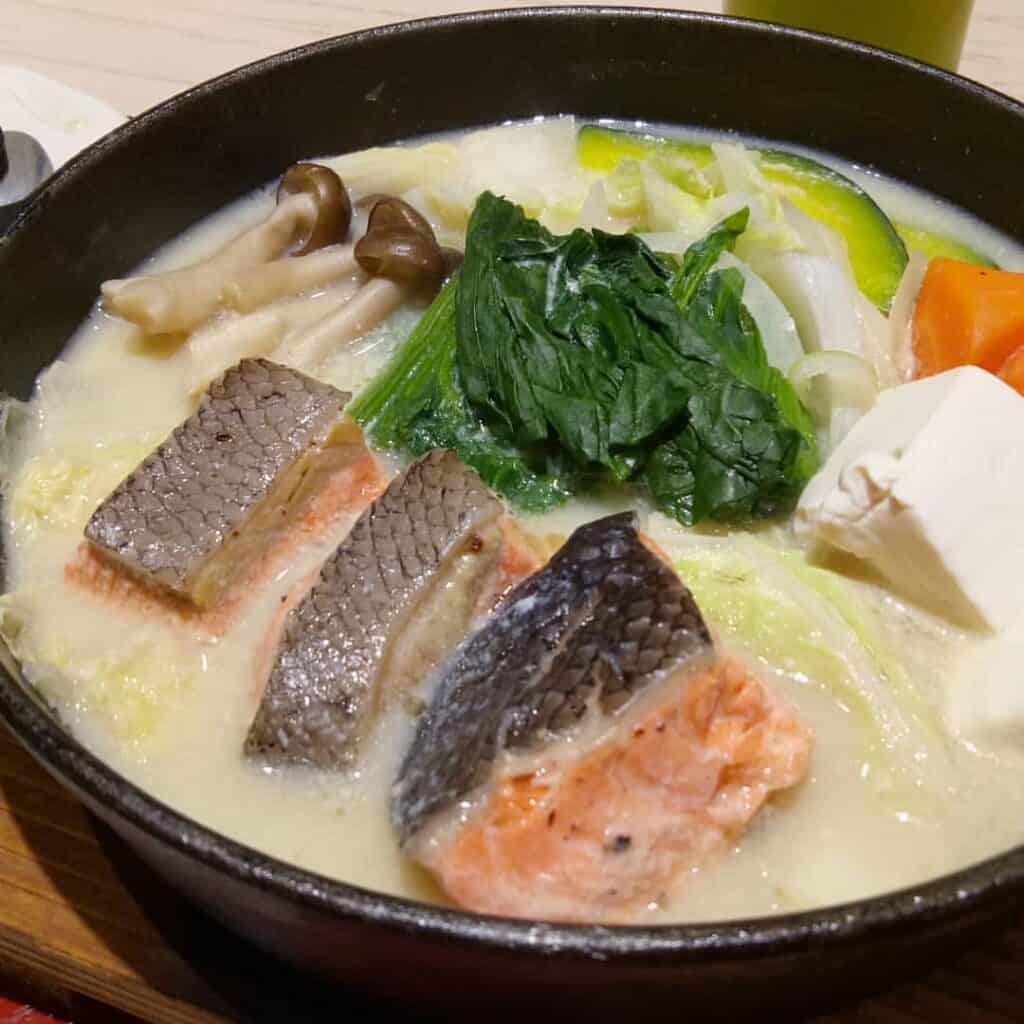
Soy milk nabe has grown increasingly popular in recent years, and this kind of nabemono is prepared with a soy milk broth, as you’d expect from the name. The broth for this soup is made by combining soy milk with dashi, which is a common ingredient in most nabe broths.
Miso and sesame are commonly included in the broth, as they work well to complement the flavor of the soy milk in this kind of nabe. One thing to consider when cooking soy milk nabe is the temperature that you cook it at. Keep the heat low to ensure that you don’t make the soy milk curdle.
Kimchi-nabe
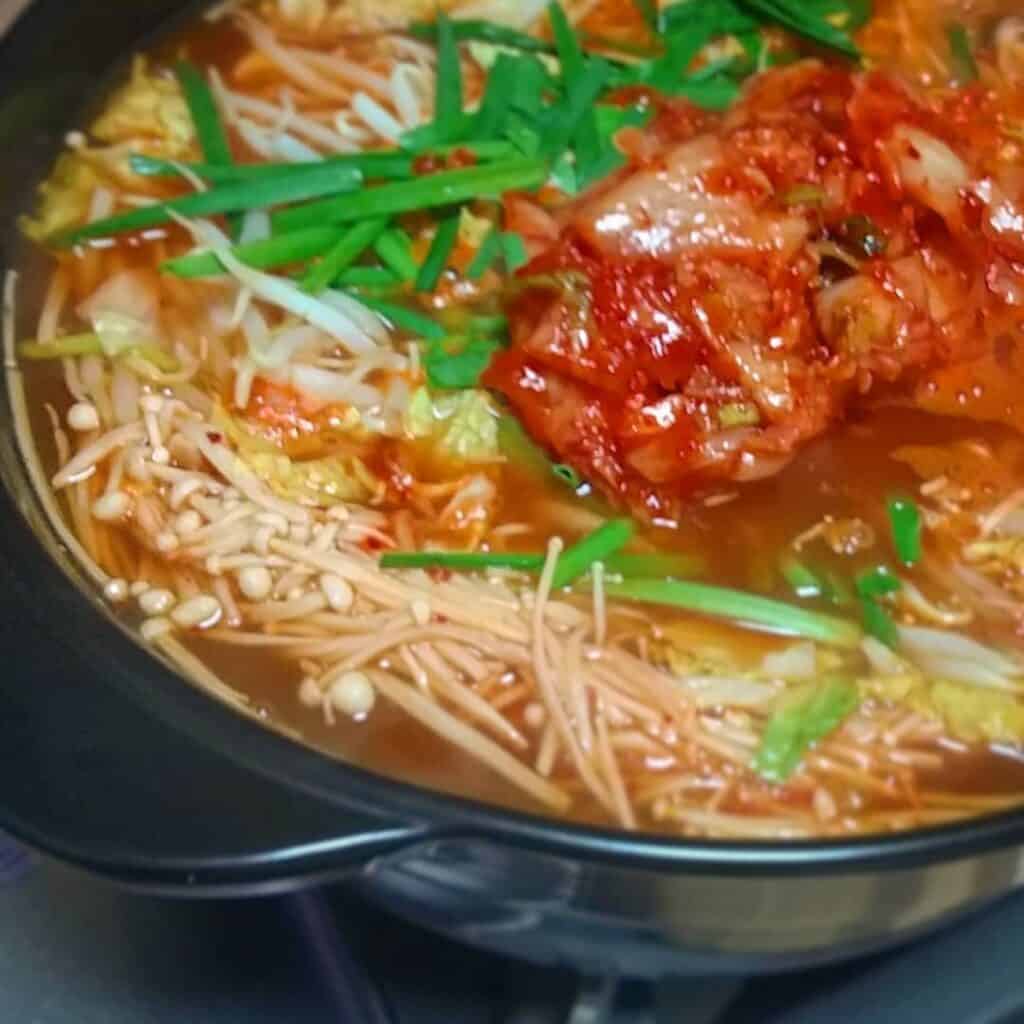
Kimchi-nabe is technically a Japanese recipe, but it has been heavily influenced by modern Korean cooking due to the inclusion of kimchi. Due to the close proximity of these two nations, it comes as little surprise that kimchi made the short hop across the sea to end up in Japan.
As with many kimchi recipes, one of the hallmarks of kimchi-nabe is that it’s a little spicier than other varieties of this dish. Other than the inclusion of kimchi, kimchi-nabe can be made with a wide range of other ingredients, including thin slices of beef, shrimp, or tofu.
Kaninabe
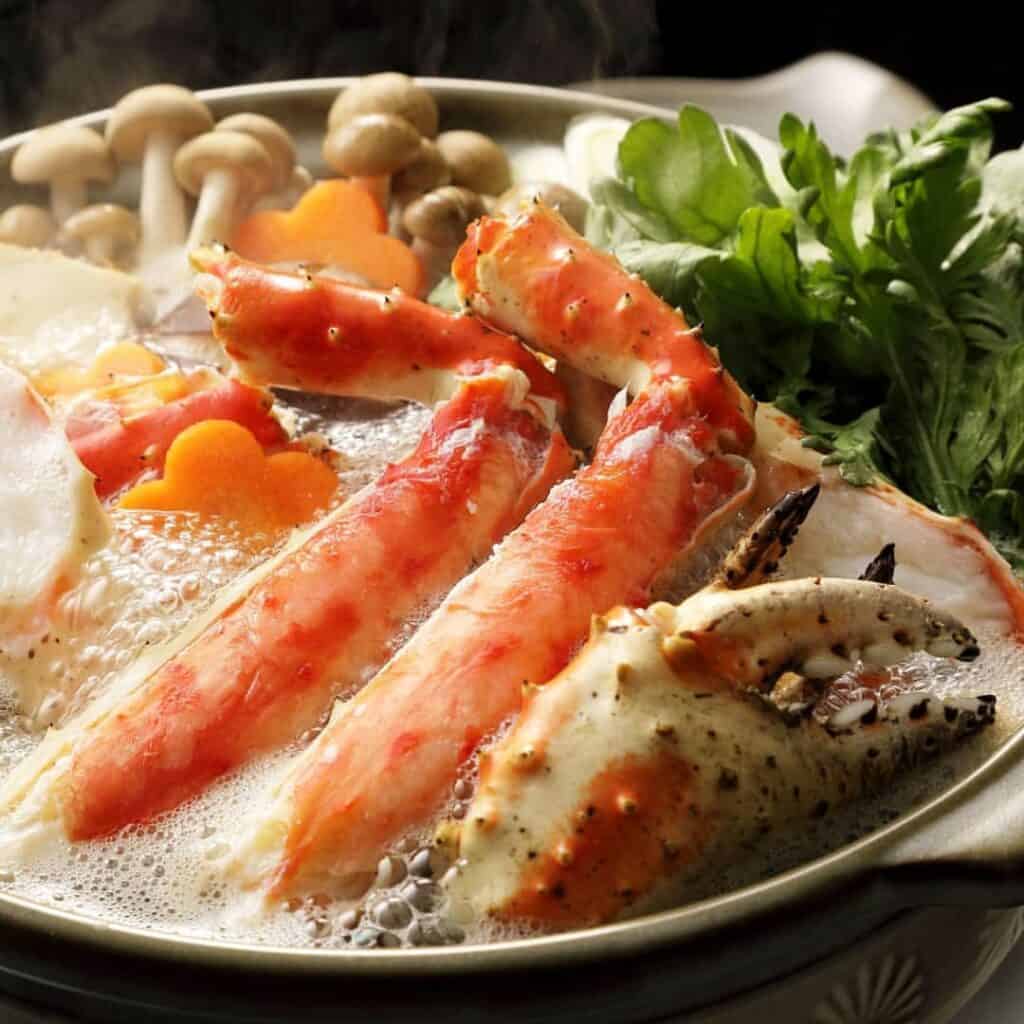
Kaninabe is another kind of nabemono that is popular during the winter, and it’s one of the tastier varieties of the dish, created with crab meat accompanied by other ingredients. The most popular types of crabs that are included in kaninabe are taraba crabs or zuwai crabs, but you can use whatever crab meat you have available.
Other than the crabs themselves, you can include many of the other ingredients that you’d find in nabe, including blocks of tofu and your choice of vegetables. Leeks and Chinese cabbage are both commonly included in kaninabe. The broth is typically made out of soy sauce and kelp.
Hakusai-butaniku
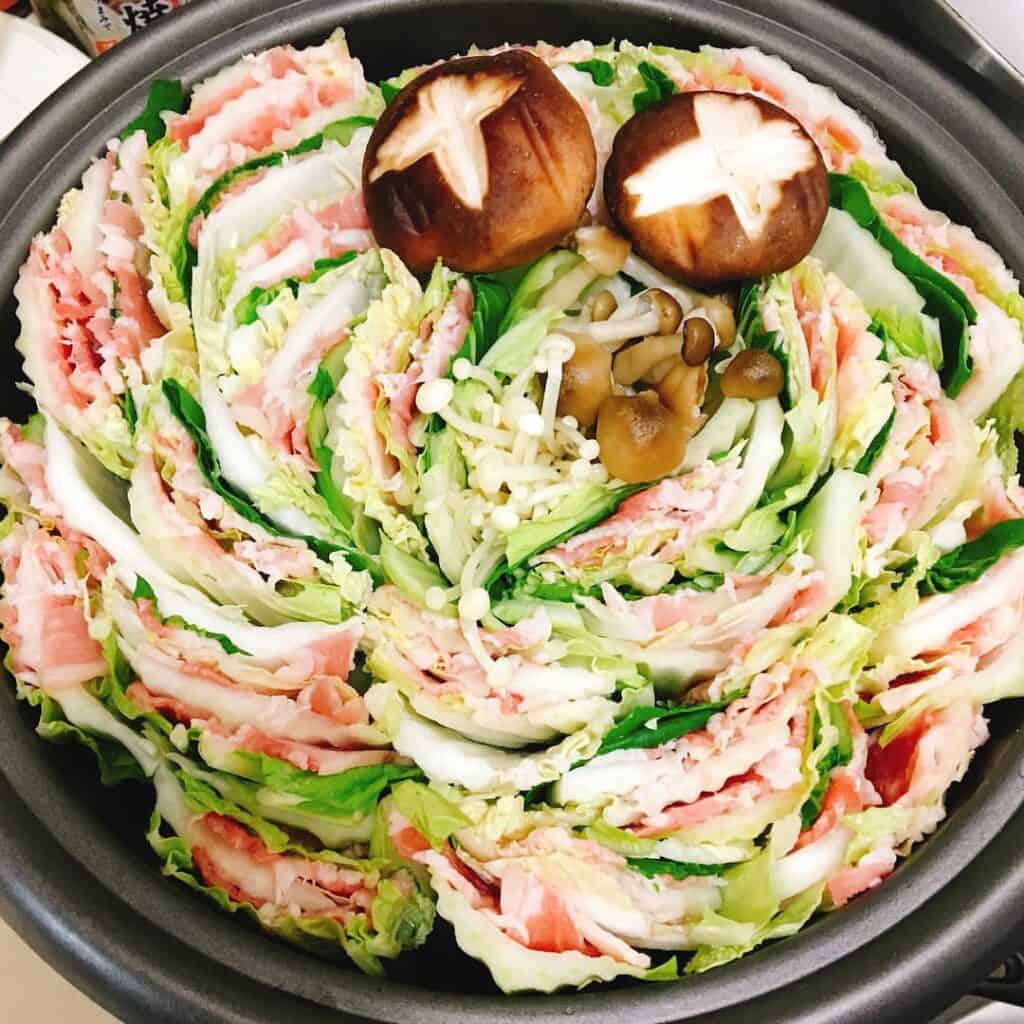
Hakusai-butaniku is one of the simpler nabe recipes on this list, and they’re both found in the name. Hakusai is the Japanese word for Chinese cabbage while butaniku means pork. Hakusai-butaniku has an impressive look to it because of how the pork and Chinese cabbage are layered in the plate.
This kind of nabe consists of alternating layers of Chinese cabbage and thin-sliced pork. While this may seem like one of the simplest forms of nabe, you can feel free to add extra ingredients to it without disrupting the interleaved Chinese cabbage and pork.
Hoto-nabe
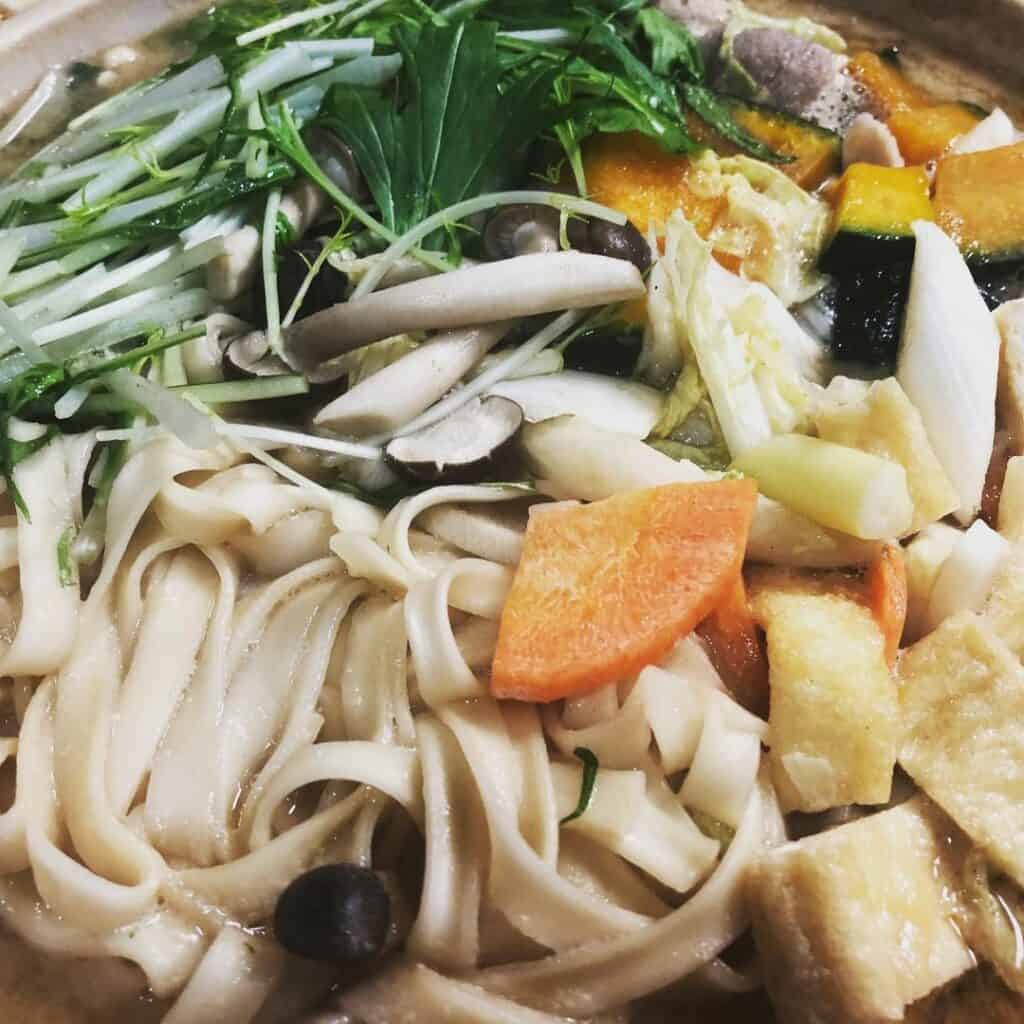
Unlike other kinds of nabe, hoto-nabe is more dependent on the noodles that you use to prepare it rather than the things that you include alongside the noodles. The flat noodles used in hoto-nabe are typically handmade, meaning that a lot more work goes into this kind of nabemono when compared to other varieties.
Hoto-nabe originates in the Yamanashi region, which was home to one of the most powerful dynasties of feudal Japan: the Takeda clan.
Dote-nabe
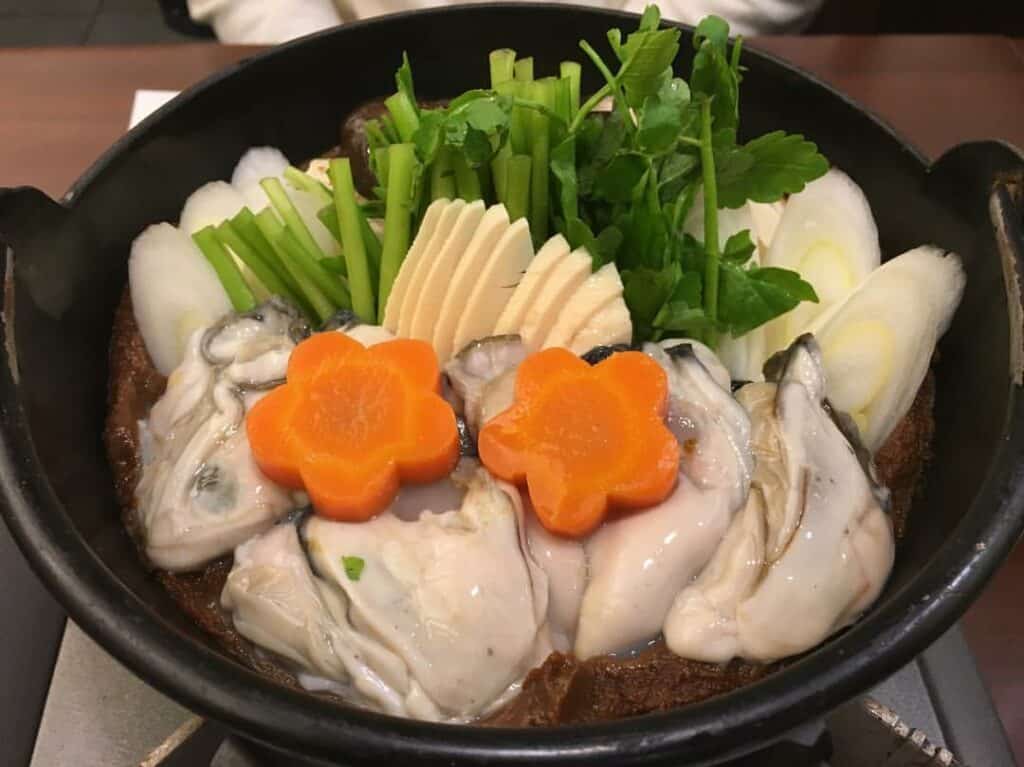
Dote-nabe is a kind of nabemono that is made with oysters and vegetables. This kind of nabe features a strongly-flavored broth that uses miso as a base. This kind of nabemono originates in Hiroshima because the city was traditionally one of the best sources of oysters in Japan.
Due to the strong flavor of the broth, dote-nabe is typically eaten without any kind of additional dipping sauce.